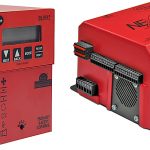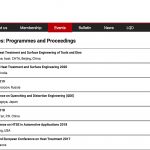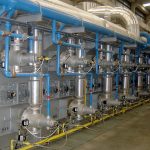In 35 years, I’ve witnessed many industrial accidents. Even at the start of my career, I was evaluating the combination of events that lead to an accident. What one thing was the key? Were the proper procedures being enforced? Was there proper safety equipment present, and was it in use? Was the equipment properly locked-out and tagged-out? Were the safety guards installed and properly secured? Addressing these issues today may prevent disaster tomorrow.
One tragic accident that stays with me is the death of two maintenance men working on a vacuum oil quench furnace. This particular furnace was leaking hydraulic oil in the quench tank, located in a pit below ground. There was proper safety equipment in use: safety harness, ventilation fan, lock-out tag-out procedures followed, and another worker as a spotter. After the repair was done, the furnace needed to be tested before filling the quench tank back up with oil. After the test run, the first worker leaned into the quench tank to inspect the hydraulic agitator; he was overcome by the pool of Argon gas – heavier than air – and fell in. His co-worker witnessed this and thought he had just slipped; he jumped in the tank to rescue him.
The saddest part is that the safety sling and harness were right there. The men had been working on the furnace while using proper safety equipment the whole time, until this split-second. The accident was investigated; misuse of safety equipment, along with a simple gas-selector switch in the wrong location, was determined to be the cause.
The focus on safety in this industry has grown over the years. I’ve had a few close calls myself (electrocuted by 440 volts after trusting someone else to turn off a main switch, overcome by fumes from a faulty gas valve, a slipped wrench to the face while tightening a bolt with my dad). Needless to say, I’ve had to learn the hard way.
To make your facility safe, you have to know where you stand. Do you have a functioning safety committee? Are your employees always following the safety rules? I’ve heard all the excuses. “We’ve always done it this way!” or “It’s only going to take a second!” The one I’ve heard the most is, “We don’t have time to fool with that!”
There is always time for safety. Safety Committee meetings should be held once a month, evaluating any prior accidents. Take a shop safety tour. Keep the OSHA requirements in mind. Check your fire systems weekly – there should be a tag on each fire extinguisher for safety committee members to initial and date. Is your emergency safety lighting in working order? Is the equipment properly labeled? Are the slings on the overhead or Jib cranes properly marked with weight limits? Is your lock-out tag-out program in use? In most heat-treating shops, there are many different types of industrial gases: natural, endothermic, ammonia, nitrogen, argon, compressed air, cooling water, and hydrogen gas just to name a few. Is all piping marked “color coded visible wall chart works well,” including flow direction? Also, watch for electrical covers; they should be securely in place. Oil and water on the floor are slip-and-fall hazards. Are the aisle ways clean and clear? Is there debris in front of the electrical panels?
Most of these are common sense items. But a combination of quick thinking and preparation go a long way when an accident occurs. Devote the necessary time and energy to keeping your facility safe. A safe working environment, along with emergency response safety training performed flawlessly after countless drills, will make the difference.





































